This week we feature perhaps one of the most recognised pedigree Limousin breeders not only in Ireland, but across the globe. William Smith of Oldcastle, Co Meath, started breeding Limousin cattle under the Milbrook prefix in 1986 at the age of 20 and has since gone on to breed some of the most highly-regarded animals in the breed.
Along with standing on council and doing a stint as president for the society, this lifetime of success has also led him to judging some of the top shows nationally and internationally – the Royal Welsh, the French nationals and Carlisle bull sales to name but a few.
The initial interest in breeding stemmed from his late father John who started pedigree breeding with Herefords as far back as 1949, followed by the importation of some of the first Simmental cattle into Ireland in 1970.

William Smith leads another of his champions.
William said: “I wanted to buy into a breed of my own. I liked the type of cattle Limousin were. They were maternal and, at the same time, they ticked all the boxes that I liked in beef cattle. The breed was really making strides in influencing the suckler herds in the UK and Ireland at the time. At that stage, the breed was known as the carcase breed, so I thought they were a breed for the future.”
With the breed decided on, William went on the look-out for foundation stock, which led him to the yard of Joe McGrath’s Curraghgrange herd. There he purchased four females, two young calves, an in-calf heifer and a mature cow.
The first Limousin animal born with the Milbrook prefix was Milbrook Boxer, a bull that later went on to top the sale in Naas, selling to AI company Dovea Genetics.
William and his father worked the farm for 30-odd years, running a small dairy herd alongside the sucklers.

Milbrook Filio ET, who sold for €15,000 at the Tully bull sale. \ Alfie Shaw
“In the early 2000s, we got out of dairying. At that stage, we either had to really develop the dairy enterprise or go the pedigree route and I chose the latter.”
This decision to go fully pedigree proved the right one when very soon after, the herd hosted a record-breaking on-farm sale.
“When I look back at it, I kind of have mixed emotions. I sold cattle I probably shouldn’t have sold, but, at the same time, from an economic point of view it was huge in that it paid off all the debt that was on the farm.
“That said, when I look back as a breeder, I feel very proud of what we achieved at the sale. To say we sold 44 cattle, of which 26 went for export, with an average of €7,100, is incredible.
“The top price was [for] Senorita who sold for €42,000. To this day, it’s the top price for a pedigree beef animal sold in Ireland. For me personally, it was a vindication of the breeding policy we had in place in the herd.”
While 44 of the herd’s best females, including six all-Ireland champions, were sold on the day, that didn’t hamper any future success. The herd still had a number of very good heifer calves coming through.
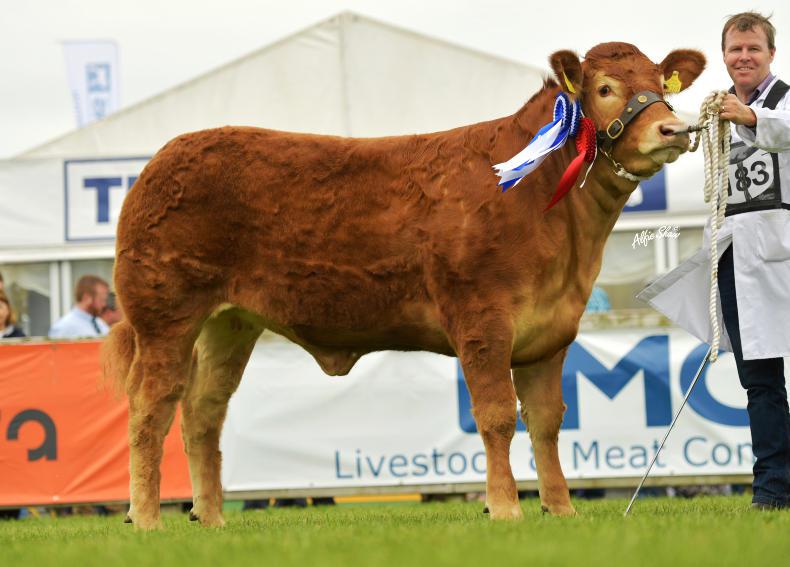
Reserve interbreed, junior interbreed and overall limousin champion at Balmoral Show 2019 Milbrook Nelenya exhibited by Mark Smith. \ Alfie Shaw
“Milbrook Ulla was born around 2003 and subsequently went on to be a great foundation female in terms of, not only what she bred, but as a show animal as well.
“She was the first animal I brought to the Balmoral Show in 2008 and she went on to win her class that day. She won the female championship at Balmoral the following year, along with being named Irish national champion.
“Her daughter Milbrook Celene followed very much in her footsteps, taking the national championship and later interbreed Balmoral champion also.”
Top moments
When asked about some of his top moments as a breeder, William clearly identifies a number of stand-outs.
“You get moments in your show career that really stand out for you personally.
“First was Milbrook Lancelot winning at the Royal Show in 1999 – [as] a small breeder, maybe the seventh or eighth Limousin animal I ever bred, to be supreme Limousin champion was just a real kick. This was one of a number of bulls that we sold that later went on to have semen collected.
“Another stand-out bull is Milbrook Tanko, who was a top Tully performer and sold for €15,000 to Western Farm Enterprise who made the bull available to farmers in southern Ireland and whom commercial men still ask me about each year at the shows. It’s great to get this customer satisfaction, despite the bull being out of production for so long.
“Now Elderberry Galahad in Dovea is extremely popular with commercial men. He has sold in excess of 100,000 straws and is a son of a bull we bred called Milbrook Alistair.
“There’s been a few stand-out moments in the show ring over the years, but one of the biggest was Balmoral when we won with Ginger Spice.
“Winning the interbreed the first time was special and the reason for that is that she was the first animal in Balmoral’s history that had won the junior interbreed that went on to be overall interbreed as well.
“The other side of it was as a showman, to bring an animal out for her first day ever and to go through the boards was something special.
“While she was such a young animal, the potential was recognised by all the other breed judges who came together to select the interbreed champion.”

Senior male champion Tullamore 2019 Milbrook Nobel ET. \ Alfie Shaw
Glittering career
This was only the start of Ginger Spice’s career, as she went on to claim the interbreed title in Balmoral for the following two years and the overall national title at Tullamore for two years.
Across all the Royal shows in the UK, she now stands as the only animal to successfully win three breed and three interbreed championships.
While she may have done it in the show ring, she now stands as a matriarch of the breed with how she’s producing.
“She is probably one of only three or four Limousin cattle that are recognised both here and across the water, in that if you say Milbrook Ginger Spice to someone, they know her and, even more so, her legacy.
“In terms of reaching her full potential, and doing more for my herd than any other animal I ever bred, without a shadow, she’s the best.”
Following on from this success, Ginger Spice and her progeny were sought after by many top cattle men across Ireland and the UK, and the decision was made to sell some embryos to Robert Graham.
“The Graham’s herd is a very established and known herd in the UK. They went to a herd who had excellent stock people and they gave the bloodline every chance,” said William.
The resulting calves were indeed given every chance, with the following results: Grahams Michael was sold for 20,000gns, Grahams Natalie for 25,000gns and a daughter Grahams Melody tapped out as overall breed champion and reserve interbreed titles at both the Royal Welsh and Great Yorkshire shows.
While the herd has enjoyed more success than most pedigree breeders can only dream of, with highs often come low points and this was the case for William.
“We had a breakdown of TB in 2014 and half the year in 2015 and subsequently we lost 50% of the herd. We really lost three generations of the young heifers.
“TB in a herd is a huge thing. It’s not even the financial aspect, it’s the mental toll it takes on you. You’re seen as a pariah in farming.”
After a number of tests, and a number of reactors found, it was suggested by the Department to do a blood test on all remaining animals. These tests showed a spike in 25 young calves.
“While not compulsory, it was decided to take these calves out on the grounds that the Department would culture all the glands so they would know if it was a wipe-out situation. Thankfully it wasn’t, so we knew it wasn’t rampant and had hope for the herd going forward as we still had a number of good lines.
“That was the lowest point in my farming life without a shadow and I don’t deny for a second there were nights after that I woke up with tears in the eyes and cried. It was a horrendous time.”
Frustration
Now out the good side and coming back stronger than ever, William pointed out that there are still other issues surrounding pedigree breeding that are holding back good stock people.
“Over the last 15 years of Limousin breeding, the influence of the ICBF on the value of my cattle and their value to the beef industry have caused me some concerns.
He is critical of the ICBF’s approach.
“Their ideology is probably right, but the manner in which they go about it is totally incorrect. They want a one-size-fits-all, which is never the case. Two and two has never made four in terms of breeding cattle.
“Looking at this historically, history is fact and time the judge of that fact. So when I look back over the years, I see some very good Limousin genetics being undermined by their programmes. But yet, in all other systems worldwide, they’re delivering profit and satisfaction.
“Where I’m seeing it doesn’t add up is the highest index cows on my farm are black whitehead heifers that I have for recipients.
“I cannot have faith in a system where they’re telling me and every commercial farmer that your black whitehead cow is actually more valuable than the top pedigree Limousin cows in the country.
“Then cows I have bred for 30 years with some super genetics. I’m confident they are super genetics, as they’ve not only proven themselves at home but also to my customers.
“If you have a good clientele that always come back to you, that’s testament to what you’re doing. That there is customer satisfaction.
“At this stage in my career, I’m going to breed Limousin cattle that I like and hopefully the dream is to breed another Limousin like all the aforementioned cattle in the article, along the way, have a bit of fun at shows, discussing these with fellow breeders and friends in the years ahead.”
When asked for advice for young and established breeders William gave the following advice.
“When you’re matching cattle, get all the advice you can get, but whatever decision you make, take ownership of it. So if you make the right decision, you are the boy. You are the man that has done this.
“If you make the wrong decision, don’t blame Shane Murphy because he wrote in the Irish Farmers Journal this was the next new big thing or don’t blame the hype that’s by AI or the figures that the ICBF produce.
“Use your eye and use your stockmanship, because we’re always looking to take that one step further to try to improve what you already have.”
On finishing the interview, William added: “As a small farmer, many people will know the Milbrook pedigree herd, but very few will know me.
“At the same time, none of the Milbrook legacy would be possible without the support of my family. My wife Claire, children John, Karen, Florence and Oliver brother Mark and my late father John.
“I would also like to say a word of thanks to the society who continue to support and develop the breed, especially secretaries both past and present.”
This week we feature perhaps one of the most recognised pedigree Limousin breeders not only in Ireland, but across the globe. William Smith of Oldcastle, Co Meath, started breeding Limousin cattle under the Milbrook prefix in 1986 at the age of 20 and has since gone on to breed some of the most highly-regarded animals in the breed.
Along with standing on council and doing a stint as president for the society, this lifetime of success has also led him to judging some of the top shows nationally and internationally – the Royal Welsh, the French nationals and Carlisle bull sales to name but a few.
The initial interest in breeding stemmed from his late father John who started pedigree breeding with Herefords as far back as 1949, followed by the importation of some of the first Simmental cattle into Ireland in 1970.

William Smith leads another of his champions.
William said: “I wanted to buy into a breed of my own. I liked the type of cattle Limousin were. They were maternal and, at the same time, they ticked all the boxes that I liked in beef cattle. The breed was really making strides in influencing the suckler herds in the UK and Ireland at the time. At that stage, the breed was known as the carcase breed, so I thought they were a breed for the future.”
With the breed decided on, William went on the look-out for foundation stock, which led him to the yard of Joe McGrath’s Curraghgrange herd. There he purchased four females, two young calves, an in-calf heifer and a mature cow.
The first Limousin animal born with the Milbrook prefix was Milbrook Boxer, a bull that later went on to top the sale in Naas, selling to AI company Dovea Genetics.
William and his father worked the farm for 30-odd years, running a small dairy herd alongside the sucklers.

Milbrook Filio ET, who sold for €15,000 at the Tully bull sale. \ Alfie Shaw
“In the early 2000s, we got out of dairying. At that stage, we either had to really develop the dairy enterprise or go the pedigree route and I chose the latter.”
This decision to go fully pedigree proved the right one when very soon after, the herd hosted a record-breaking on-farm sale.
“When I look back at it, I kind of have mixed emotions. I sold cattle I probably shouldn’t have sold, but, at the same time, from an economic point of view it was huge in that it paid off all the debt that was on the farm.
“That said, when I look back as a breeder, I feel very proud of what we achieved at the sale. To say we sold 44 cattle, of which 26 went for export, with an average of €7,100, is incredible.
“The top price was [for] Senorita who sold for €42,000. To this day, it’s the top price for a pedigree beef animal sold in Ireland. For me personally, it was a vindication of the breeding policy we had in place in the herd.”
While 44 of the herd’s best females, including six all-Ireland champions, were sold on the day, that didn’t hamper any future success. The herd still had a number of very good heifer calves coming through.

Reserve interbreed, junior interbreed and overall limousin champion at Balmoral Show 2019 Milbrook Nelenya exhibited by Mark Smith. \ Alfie Shaw
“Milbrook Ulla was born around 2003 and subsequently went on to be a great foundation female in terms of, not only what she bred, but as a show animal as well.
“She was the first animal I brought to the Balmoral Show in 2008 and she went on to win her class that day. She won the female championship at Balmoral the following year, along with being named Irish national champion.
“Her daughter Milbrook Celene followed very much in her footsteps, taking the national championship and later interbreed Balmoral champion also.”
Top moments
When asked about some of his top moments as a breeder, William clearly identifies a number of stand-outs.
“You get moments in your show career that really stand out for you personally.
“First was Milbrook Lancelot winning at the Royal Show in 1999 – [as] a small breeder, maybe the seventh or eighth Limousin animal I ever bred, to be supreme Limousin champion was just a real kick. This was one of a number of bulls that we sold that later went on to have semen collected.
“Another stand-out bull is Milbrook Tanko, who was a top Tully performer and sold for €15,000 to Western Farm Enterprise who made the bull available to farmers in southern Ireland and whom commercial men still ask me about each year at the shows. It’s great to get this customer satisfaction, despite the bull being out of production for so long.
“Now Elderberry Galahad in Dovea is extremely popular with commercial men. He has sold in excess of 100,000 straws and is a son of a bull we bred called Milbrook Alistair.
“There’s been a few stand-out moments in the show ring over the years, but one of the biggest was Balmoral when we won with Ginger Spice.
“Winning the interbreed the first time was special and the reason for that is that she was the first animal in Balmoral’s history that had won the junior interbreed that went on to be overall interbreed as well.
“The other side of it was as a showman, to bring an animal out for her first day ever and to go through the boards was something special.
“While she was such a young animal, the potential was recognised by all the other breed judges who came together to select the interbreed champion.”

Senior male champion Tullamore 2019 Milbrook Nobel ET. \ Alfie Shaw
Glittering career
This was only the start of Ginger Spice’s career, as she went on to claim the interbreed title in Balmoral for the following two years and the overall national title at Tullamore for two years.
Across all the Royal shows in the UK, she now stands as the only animal to successfully win three breed and three interbreed championships.
While she may have done it in the show ring, she now stands as a matriarch of the breed with how she’s producing.
“She is probably one of only three or four Limousin cattle that are recognised both here and across the water, in that if you say Milbrook Ginger Spice to someone, they know her and, even more so, her legacy.
“In terms of reaching her full potential, and doing more for my herd than any other animal I ever bred, without a shadow, she’s the best.”
Following on from this success, Ginger Spice and her progeny were sought after by many top cattle men across Ireland and the UK, and the decision was made to sell some embryos to Robert Graham.
“The Graham’s herd is a very established and known herd in the UK. They went to a herd who had excellent stock people and they gave the bloodline every chance,” said William.
The resulting calves were indeed given every chance, with the following results: Grahams Michael was sold for 20,000gns, Grahams Natalie for 25,000gns and a daughter Grahams Melody tapped out as overall breed champion and reserve interbreed titles at both the Royal Welsh and Great Yorkshire shows.
While the herd has enjoyed more success than most pedigree breeders can only dream of, with highs often come low points and this was the case for William.
“We had a breakdown of TB in 2014 and half the year in 2015 and subsequently we lost 50% of the herd. We really lost three generations of the young heifers.
“TB in a herd is a huge thing. It’s not even the financial aspect, it’s the mental toll it takes on you. You’re seen as a pariah in farming.”
After a number of tests, and a number of reactors found, it was suggested by the Department to do a blood test on all remaining animals. These tests showed a spike in 25 young calves.
“While not compulsory, it was decided to take these calves out on the grounds that the Department would culture all the glands so they would know if it was a wipe-out situation. Thankfully it wasn’t, so we knew it wasn’t rampant and had hope for the herd going forward as we still had a number of good lines.
“That was the lowest point in my farming life without a shadow and I don’t deny for a second there were nights after that I woke up with tears in the eyes and cried. It was a horrendous time.”
Frustration
Now out the good side and coming back stronger than ever, William pointed out that there are still other issues surrounding pedigree breeding that are holding back good stock people.
“Over the last 15 years of Limousin breeding, the influence of the ICBF on the value of my cattle and their value to the beef industry have caused me some concerns.
He is critical of the ICBF’s approach.
“Their ideology is probably right, but the manner in which they go about it is totally incorrect. They want a one-size-fits-all, which is never the case. Two and two has never made four in terms of breeding cattle.
“Looking at this historically, history is fact and time the judge of that fact. So when I look back over the years, I see some very good Limousin genetics being undermined by their programmes. But yet, in all other systems worldwide, they’re delivering profit and satisfaction.
“Where I’m seeing it doesn’t add up is the highest index cows on my farm are black whitehead heifers that I have for recipients.
“I cannot have faith in a system where they’re telling me and every commercial farmer that your black whitehead cow is actually more valuable than the top pedigree Limousin cows in the country.
“Then cows I have bred for 30 years with some super genetics. I’m confident they are super genetics, as they’ve not only proven themselves at home but also to my customers.
“If you have a good clientele that always come back to you, that’s testament to what you’re doing. That there is customer satisfaction.
“At this stage in my career, I’m going to breed Limousin cattle that I like and hopefully the dream is to breed another Limousin like all the aforementioned cattle in the article, along the way, have a bit of fun at shows, discussing these with fellow breeders and friends in the years ahead.”
When asked for advice for young and established breeders William gave the following advice.
“When you’re matching cattle, get all the advice you can get, but whatever decision you make, take ownership of it. So if you make the right decision, you are the boy. You are the man that has done this.
“If you make the wrong decision, don’t blame Shane Murphy because he wrote in the Irish Farmers Journal this was the next new big thing or don’t blame the hype that’s by AI or the figures that the ICBF produce.
“Use your eye and use your stockmanship, because we’re always looking to take that one step further to try to improve what you already have.”
On finishing the interview, William added: “As a small farmer, many people will know the Milbrook pedigree herd, but very few will know me.
“At the same time, none of the Milbrook legacy would be possible without the support of my family. My wife Claire, children John, Karen, Florence and Oliver brother Mark and my late father John.
“I would also like to say a word of thanks to the society who continue to support and develop the breed, especially secretaries both past and present.”








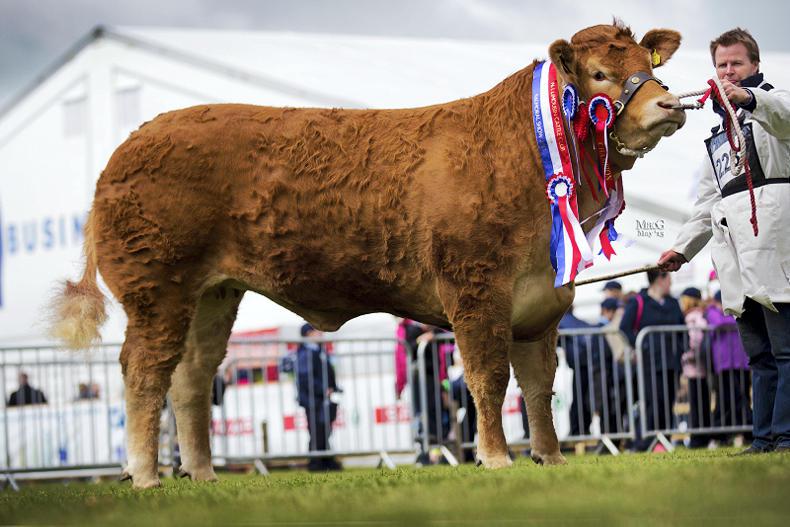
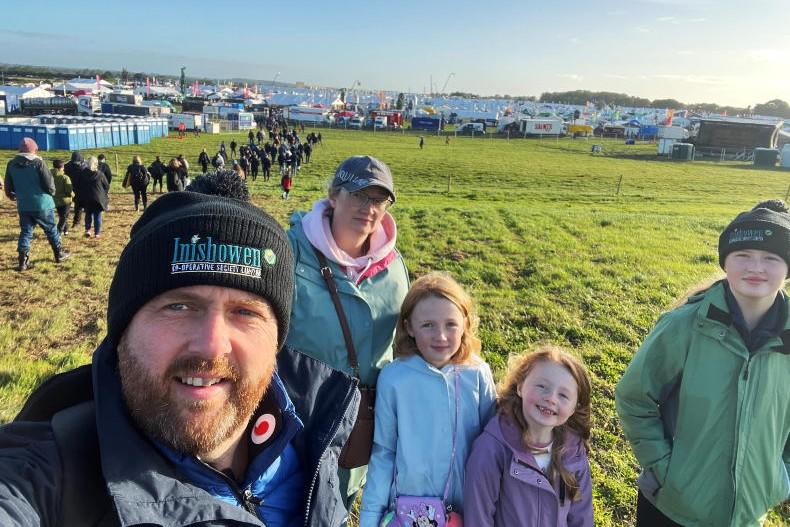

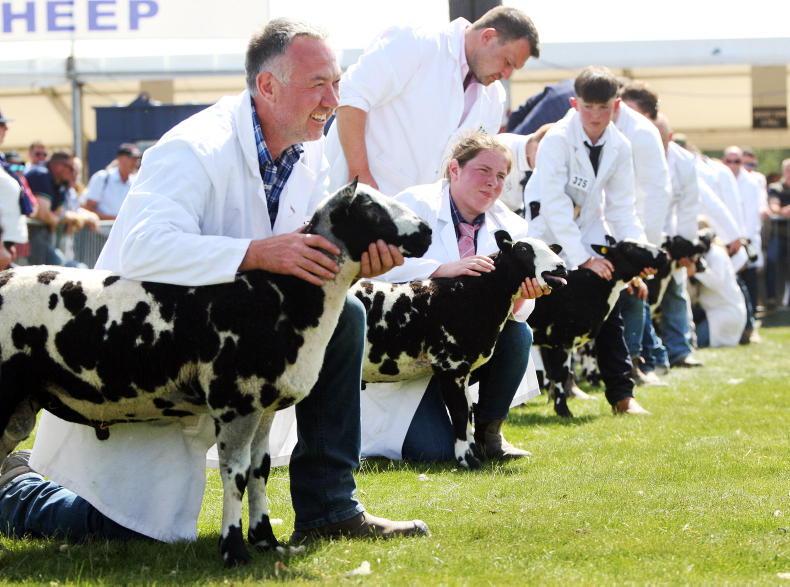
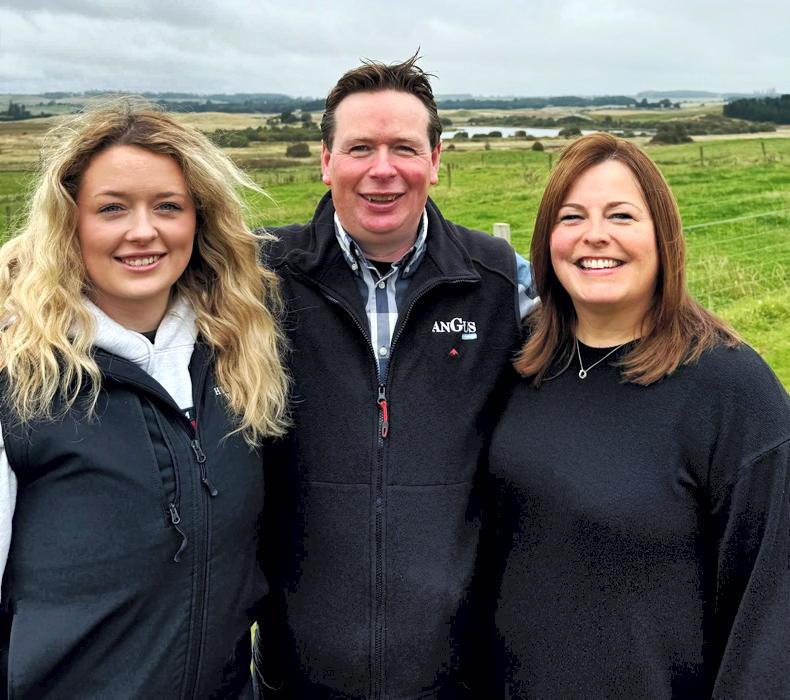
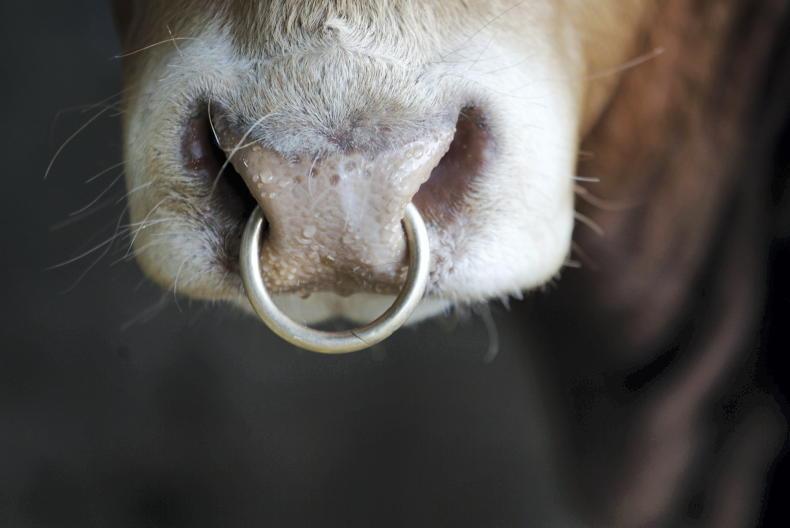
SHARING OPTIONS